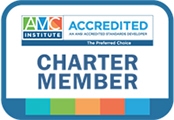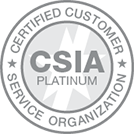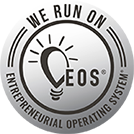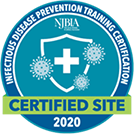Kicking off a new year, it’s a time for looking ahead and making resolutions to change for the better. In the case of associations and non-profits, those resolutions might come in the form of addressing long-standing issues that, once addressed, can help staff and leaders finally get on the path to growth. However, for those who remain firmly planted in the “that’s just the way we’ve always done it” camp, reasons abound for why an organization should prioritize a critical look at improving its operations and introducing efficiencies.
For Better Board Governance
The volunteer leaders guiding an organization often have much more to offer than mitigating fires that crop up or managing day-to-day operational issues, yet organizations struggling with operations issues often bog their leaders down with these problems, preventing them from becoming the strategic leaders the organization needs.
Organizations that recognize the need to utilize their board differently may call in outside guidance for the process. “People have loyalty to programs and processes,” said Amy Williams, CAE, MPA, IOM, Vice President of Sales and Consulting at Association Headquarters (AH), who leads board governance trainings and association operations assessments. “It can be difficult for staff or volunteers to say that those programs or processes are not working, so an outside perspective is valuable. And when you get used to doing something a certain way, it’s hard to look at doing it differently. That’s where outside guidance can be particularly effective.”
Williams recently worked with an association on an operational assessment driven by the board, as the organization was experiencing growing pains. “They wanted to look at it from the personnel side. Do they have the right people, processes, and technology?” said Williams. The large-scale assessment has evaluated staff support for the association’s sections, the resources the national office provides to the sections, what kinds of issues the board is focusing on, and whether the materials provided to the board from staff are sufficient to guide strategic discussions. “All of this is in an effort to recognize what the association staff and board may need to be doing differently to meet their growth goals, but it begins and ends with the board and how they’re going to lead the organization into the future,” said Williams.
For Growth
While many on the quest for operational excellence believe it to be a perpetual journey, the Institute for Operational Excellence notes that, in this mindset, there is no inherent guarantee of growth. “What good is an efficient factory if the customer no longer needs our product?” they wrote. The value of operational efficiency improvement for an organization, and when growth occurs, is when all staff—every person at every level in the organization—can recognize breakdowns to an efficient flow of operations, and know what to do to correct that breakdown. This transparency, and the ability of the workflow to correct itself, frees up leaders to focus on the organization’s growth.
Williams noted that the organization undergoing the operational assessment struggles with an antiquated database system. “This outdated and inefficient technology means that sections have found their own way to manage the technology,” said Williams. “There isn’t timely or accurate reporting, so staff can’t get the information that they need. As a result, their membership director is focused on database administration instead of strategic growth.” The consequence of this for the organization is that key staff are bogged down with inefficiencies that prevent them from focusing on more strategic initiatives that could lead to growth.
For Strategic Planning
Many organizations conduct a strategic planning session first, and then consider what resources they need to meet the strategic goals they’ve laid out. While this traditional approach to strategic planning can be effective, Williams advises that a resource assessment—and a possible reset—in advance of strategic planning can be particularly valuable for organizations that know they have issues to correct.
“Undergoing an operational assessment in advance of a strategic planning session, before setting strategic goals, allows the organization to get their house in order before they set goals that they may struggle to achieve,” said Williams.
Start Today for a Better 2022
“Associations and non-profits task their staff with doing more with less, and if they’re not operating efficiently that’s impossible to do,” said Williams. “Members have expectations that they’re dealing with Amazon-type solution that are intuitive, if they have to call in because the system doesn’t recognize their username or the dues amount is showing up incorrect, it doesn’t make a good impression, especially to the younger members who have higher expectations.” Energize staff, engage leaders, and streamline operations to make 2022 the year of growth, better board governance, and stronger strategy for your organization.




